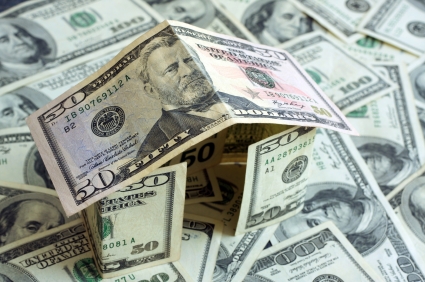No Cost Refinancing: Pros and Cons
Buying a home can be a daunting experience because of all the extra financial responsibility it leaves you with. Another reason home buying could be less-than-palatable is the closing costs you face when finalizing a mortgage agreement. The easy answer to that would be taking out a no-cost mortgage. But that's not always the best strategy, depending on your individual situation.

Basics of No-Cost Home Loans
No-cost home loans aren't absolutely no-cost — they do require interest payments, just like any other loan. But they do not require a prerequisite cash payment like most other loans do. Avoiding that up-front cost can be a big bonus at the time of purchase, considering closing costs and immediate outlay usually add up to anywhere from 3% to 5% of the amount of the loan. No-cost home loans can include traditional mortgages on home purchases or refinances of existing loans.
Closing-cost-free loans emerged as a popular form of alternative home loan in the early 1990s and grew in popularity until the mortgage crisis. They were often issued in the same way as subprime mortgages to customers who did not have enough cash on hand to purchase a home. Since the mortgage crisis and tighter oversight of the home loan industry, the loans have grown less popular.
Not every bank currently offers zero-cost loans. Bank of America stopped issuing the loans in an effort to add transparency to its troubled mortgage division. Wells Fargo still offers no-cost loans under the name "Closing CostSaver."
Pros of Zero-Cost Loans
The main advantage of a no-cost loan is the ability to circumvent the up-front costs of home ownership. If you bought a home near the national average price with a no-cost mortgage, you could save anywhere from $5,000 to $7,500 at the time of the purchase. If you're a young person buying your first home, that relatively small amount of cash savings could legitimately help you get your foot in the door of home ownership.
A more common way the loans could help is in the case of a home loan refinancing plan. If you are looking to take advantage of plummeting mortgage rates by restructuring your home loan the lack of an up-front cash payment could provide real incentive to go forward with refinancing. Mortgage rates are so low right now that you could theoretically refinance with a zero-cost loan and absorb the higher rate because it might still be a comparable rate to what you are paying pre-refinancing.
Cons of No-Cost Loans
If there were no catch to taking out a no-cost mortgage, everyone would do it. But there is a catch, and it's a potentially serious one.
Rates on zero-cost loans are typically about 0.5% higher than rates on comparable standard mortgages. That might not sound like much, but ratcheting up the rate on a $300,000 30-year loan from 4.5% to 5.0% adds about $90 per month to your payments. Over the 30-year life of the loan, that adds up to more than $32,000. Best case scenario, you might have saved about $12,000 on the initial costs by taking out the no-cost loan. No-cost loans can also come with pre-payment penalties to discourage you from creatively refinance every time mortgage rates fall.
Unless you are using the loan to refinance or absolutely cannot purchase your home at the present time but anticipate a serious infusion of cash in the future, is not necessarily the smartest move to opt for the immediate benefit of the no-cost loan in favor of long-term savings.

